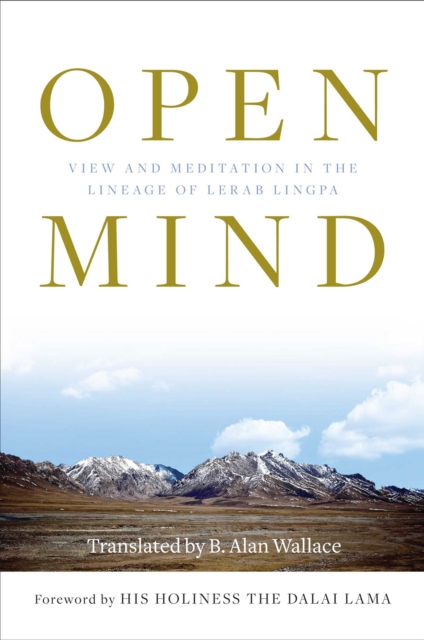
Open Mind : View and Meditation in the Lineage of Lerab Lingpa EPUB
Edited by Eva Natanya
EPUB
Description
Get to know the teachings and legacy of the celebrated Lerab Lingpa, the influential confidant of the Thirteenth Dalai Lama, in this collection of practical instructions on the Great Perfection and reflections on the nonsectarian (rime) approach to Tibetan Buddhism.
Lerab Lingpa (18561926), also known as Tertn Sogyal, was one of the great Dzogchen (Great Perfection) masters of the nineteenth and early-twentieth centuries and a close confidant and guru of the Thirteenth Dalai Lama. This volume contains translations by B. Alan Wallace of two works that are representative of the lineage of this great ';treasure revealer,' or tertn.
The first work, composed by Lerab Lingpa himself, is The Vital Essence of Primordial Consciousness. It presents pith instructions on all the stages of the Great Perfection, which is the highest form of meditation and practice in the Nyingma school of Tibetan Buddhism. In this practice, the meditator comes to see directly the ultimate nature of consciousness itself. The work guides the reader from the common preliminaries through to the highest practices of the Great Perfectionthe direct crossing over and the achievement of the rainbow body.
The second work, Selected Essays on Old and New Views of the Secret Mantrayana, is a collection of seven essays by two of Lerab Lingpa's close disciples, Dharmasara and Je Tsultrim Zangpo. Dharmasara wrote six of the essays, providing detailed, erudite explanations of the compatibility among the theories and practices of Great Perfection, Mahamudra (a parallel practice tradition found in other schools), and the Madhyamaka view, especially as these are interpreted by the Indian pandita Candrakirti, the Nyingma master Longchen Rabjam, and Tsongkhapa, founder of the Geluk school of Tibetan Buddhism. The one essay by Je Tsultrim Zangpo (a.k.a. Tulku Tsullo), ';An Ornament of the Enlightened View of Samantabhadra,' contextualizes the Great Perfection within the broader framework of Mahayana and Vajrayana Buddhism and then elucidates all the stages of practice of the Great Perfection, unifying the profound path of cutting through and the vast path of the spontaneous actualization of the direct crossing over.
This volume will be of great interest for all those interested in the theory and practice of the Great Perfection and the way it relates to the wisdom teachings of Tsongkhapa and others in the new translation schools of Tibetan Buddhism.
Information
-
Download - Immediately Available
- Format:EPUB
- Pages:424 pages
- Publisher:Wisdom Publications
- Publication Date:06/02/2018
- Category:
- ISBN:9781614294047
Information
-
Download - Immediately Available
- Format:EPUB
- Pages:424 pages
- Publisher:Wisdom Publications
- Publication Date:06/02/2018
- Category:
- ISBN:9781614294047






